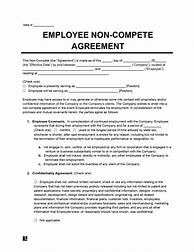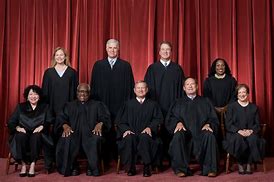Below is a review of the posts on Facebook and LinkedIn from the past week. You can check out the full posts by clicking on the links.

The post on Sunday 8/11/2024 explained how Chevron deference got washed out to sea by recent Supreme Court decision. The recent decision literally washes away a 40-year-old rule that gave federal agencies broad power to fill in the blanks when federal laws are ambiguous. So now courts now have a greater say when it comes to deciding what ambiguous statutory language means and how the law is to be applied. That is essentially a transfer of power away from agencies and to courts.
The Supreme Court’s ruling in this case placed its earlier decision in Chevron U.S.A. Inc. v. Natural Resources Defense Council, Inc., 467 U.S. 837 (1984) under the microscope. What Chevron did, and the practical effect, are in the post. That “Chevron deference”, as it became known, has been granted in thousands of cases since the rule was established, including in cases involving employment law issues. But now that is gone. The new case explicitly overruled Chevron and requires courts to exercise their independent judgment when deciding whether a federal agency properly interpreted a statute – and more as noted in the post.
Let’s look at how the issue of Chevron’s continuing viability got to the Supreme Court. It actually arose from a challenge to a National Marine Fisheries Service (NMFS) rule (the details of which are actually important and are in the post). Atlantic herring fishing businesses challenged the rule, saying the NMFS lacked the authority to require them to make the payments. The statute on which they based their argument is detailed in the post. A federal appeals court applied Chevron and ruled in favor of the government (on the basis noted in the post). A separate group raised an unsuccessful similar challenge in a different suit. The Supreme Court agreed to accept both cases for further review. And then by a 6-3 vote in Loper Bright Enterprises v. Raimondo, No. 22-451 (U.S. 6/28/24), the Court struck down the Chevron rule. The Court’s decision takes us back to 1803 for the proposition that courts should get the last word. But that is not in a vacuum – see the post. So the Supreme Court vacated the lower rulings and remanded the cases.
You are probably thinking, “why do I care?” You care because the decision will make it easier for workers to challenge federal agency interpretations of federal statutes. In the employment arena, it will affect the EEOC, DOL, OSHA, and NLRB. And the flow-through from that as to HR administrators? See the post.
TAKEAWAY: Since prior guidance from agencies may no longer be given the same weight, or may be overruled, it is even more imperative that employers consult employment lawyers.

The post on Monday 8/12/2024 showed how TX federal court enjoins FTC rule prohibiting noncompete agreements. NOTE that a PA federal court recently ruled to the contrary. But first, some background.
In January 2023, the U.S. Federal Trade Commission (FTC) proposed a rule that, with limited exceptions (as noted in the post), would prohibit employers from entering into post-employment non-compete agreements with workers. (See our prior posts on this too.) What the rule makes unlawful, and to whom it applies, is detailed in the post. And the rule not only applies prospectively but invalidates existing non-competes. The FTC issued the “Final Rule” on April 23, 2024 with a scheduled effective date of September 4, 2024.
On July 3rd, Judge Ada Brown of the United States District Court for the Northern District of Texas issued the first ruling in these pending challenges to the Final Rule (Ryan LLC v. Federal Trade Commission). In her 33-page decision, Judge Brown preliminarily enjoined the Final Rule from going into effect on September 4, 2024 but only with respect to the Plaintiffs in the action—consisting of one private business (Ryan, LLC), the U.S. Chamber of Commerce, the Longview, Texas Chamber of Commerce, and two trade organizations (Business Roundtable and the Texas Association of Business)—and signaled that the Final Rule is unlikely to pass final judicial review on the merits for a number of reasons. So why did Judge Brown rule in that way?
First and foremost, she did not agree with the FTC’s argument (detailed in the post) that it was authorized to publish the Final Rule under its broad powers to prevent unfair methods of competition. While Judge Brown acknowledged that the FTC has the authority to make certain “housekeeping” rules dealing with unfair or deceptive practices, she noted that the FTC Act does not “expressly grant the [FTC] authority to promulgate substantive rules regarding unfair methods of competition.” And what followed as a result is in her opinion and in the post.
Even though the first reason was sufficient for Judge Brown to find that the Plaintiffs had established a likelihood of success on the merits, she also had a second basis for her decision. She found that the FTC’s rulemaking was arbitrary and capricious. What she said is in the post. She also noted the FTC’s shortcomings, including its failure to consider any alternatives to a blanket ban on non-competes, failure to consider the potential “pro-competitive justifications” of such covenants, and more as noted in the post.
Judge Brown also had little trouble finding that the Final Rule would result in irreparable harm to the Plaintiffs because its implementation would “announce open season” for poaching workers and increase the risk that departing workers would take valuable intellectual property and proprietary methods to competitors. How that translated to irreparable harm is in the post. So, finding that the injury to the Plaintiffs and the public interest would be great if the court were not to enjoin the rule, the court granted the Plaintiffs preliminary injunctive relief and stayed the Final Rule’s effective date as to the Plaintiffs. But not nationwide. Judge Brown also made a statement as to timing of a decision on the underlying action given the Rule’s effective date – see the post for more on that.
TAKEAWAY: Employers are running short on time now – be ready for the Rule to go into effect if no nationwide stay is put in place. Talk to an employment lawyer about the Rule’s effect on your business and what you need to do.

The post on Tuesday 8/13/2024 told us grocer pays $40K to settle claims it asked applicant to cut his dreads. According to the complaint filed in 2022 as EEOC v. Houchens Food Group, Inc. d/b/a Hometown IGA, the plaintiff is a Spiritualist Rastafarian whose religious observance requires that he wear dreadlocks. Houchens allegedly failed to consider an accommodation for the plaintiff and denied him employment. The consent decree Houchens agreed to includes monetary relief (as noted above) and more as listed in the post.
Note that this case dates back to before the US Supreme Court in Groff v. DeJoy changed how employers must show undue hardship when considering religious accommodation requests. A reminder as to the holding in Groff is in the post. According to EEOC guidance, religious dress and grooming practices are one of many protected areas under Title VII’s prohibition of religious discrimination, including Rastafarian dreadlocks as an example.
TAKEAWAY: Employers have an obligation to (try to) accommodate sincerely held religious beliefs; the burden of showing undue hardship as a defense (way not to) accommodate is now higher due to Groff. Again, consult an employment lawyer.

The post on Wednesday 8/14/2024 noted lawn care company paid by HOA won’t mow owner’s lawn. How to resolve this issue? The owner here is an elderly woman with medical issues. She belongs to an homeowner’s association and pays monthly dues that cover “lawn care”. Apparently the lawn care employees refuse to maintain her lawn. She called the company owner; what he told her is in the post. That all started the prior year after she complained that the law care employees chopped down her flowers. The neighbors are now complaining about the woman’s lawn and she gets no service from the lawn care company for which she pays assessments. She contacted the HOA president; what she was told to do, and the result, is in the post. The woman is afraid to file a complaint with any agency as she was “warned” not to; she is also worried about what else might happen (see the post). So, what should or can she do?
The first suggestion is to talk to (the complaining) neighbors and ask for their help (with the lawn itself and more as noted in the post). Next, she should NOT communicate directly with the lawn care company any more – the reason behind that is in the post. Finally, a meeting with the HOA board is in order to discuss the issues and applicable documents/law (see the post).
TAKEAWAY: Condo and HOA boards are responsible for the performance of vendors they hire – but they need to know of any problems. If there are legal issues, a community association lawyer should be contacted.

In the post on Thursday 8/15/2024 we discussed a conflict with kids’ lemonade stand in HOA. I think we all agree that having a lemonade stand is a rite of passage for many American kids. But not everyone enjoys the kids setting up shop on the side of the road. In one neighborhood, that dislike got ugly and turned into a dispute between residents.
It all started when kids in the Wildernest community put up a lemonade stand in their neighborhood. The stand became a point of contention after members of the HOA called the cops on the kids. What the police statement said about the report and what deputies saw and did upon arrival on the scene is in the post. That should have been the end of it, right? But no, instead the kerfuffle was only getting started.
The responding police moved on to deal with parking issues in the area and the original reporting parties came out and began yelling at the kids, claiming they were on private property. The police came back; what happened next is also in the post. The residents who called the cops on the kids probably won’t be drinking any of that fresh lemonade this summer.
TAKEAWAY: Does your condo or homeowners’ association regulate things like this? Are you sure? Should it? A community association lawyer can help.

The post on Friday 8/16/2024 was about the effect of some Supreme Couret 2024 decisions on labor and employment law – and your company. The Supreme Court issued four decisions narrowing agencies’ power to make policy through formal rulemaking and adjudication. In the short term, these decisions could make it harder for agencies to defend major rules on overtime, joint employment, prevailing wages, pregnancy accommodation and noncompete agreements. And in the long run? See the post.
As noted, at the end of its 2024 term, the U.S. Supreme Court handed down four decisions limiting the power of federal agencies. None of the decisions involved a labor and employment agency, but all could transform labor and employment law. What might also follow is noted in the post. Further, federal agencies might have to find new ways to make policy including filing more strategic lawsuits and the other things noted in the post. Let’s summarize.
What is considered by many as the biggest decision came in Loper Bright Enterprises v. Raimondo. There the Supreme Court held that judges cannot defer to an agency’s interpretation of the law, overruling multiple decares of guidance under the Chevron rule. What judges must do instead is detailed in the post.
Next, in Securities and Exchange Commission v. Jarkesy, the Supreme Court narrowed the range of penalties that agencies can impose through their own adjudicative processes, i.e., with administrative law judges (ALJs). The differences between ALJs and judges appointed under the U.S. Constitution are in the post. In Jarkesy, the Court noted that SEC ALJs have used purely administrative processes to impose, among other things, civil penalties. Because civil penalties are a “legal” remedy, they could have been tried in front a jury at common law. That brought in constitutional issues (and a basic overruling of the SEC’s in-house process) as noted in the post.
Third, the Court signaled that judges should demand better explanations from agencies during the rulemaking process. In Ohio v. Environmental Protection Agency, it struck down the EPA’s “good neighbor” plan under the Clean Air Act because the agency “ignored” important problems raised during the public-comment period. Why that was important, and the possible effect, were noted by the court and are detailed in the post.
Finally, in Corner Post, Inc. v. Board of Governors of the Federal Reserve System, the Court expanded the window for rulemaking challenges. The question in this case was when a plaintiff can sue to challenge a rule under the Administrative Procedure Act (APA) which has a six-year statute of limitations (i.e., deadline to file suit). The issue here was when that six-year period begins to run – see the post for how the Supreme Court decided the question (and the possible turmoil it brings).
Again, none of these decisions involved labor and employment law, but all will affect labor and employment agencies – including the Department of Labor (DOL), the National Labor Relations Board (NLRB), the Equal Employment Opportunity Commission (EEOC), and the Occupational Health and Safety Administration (OSHA). First, those and other agencies will have a harder time making rules. Until Loper Bright, agencies were used to deference from courts. Examples are in the post. But now the agencies cannot expect to go into court with a leg up. Their new posture in litigation is as described in the post.
That shift could affect some rules immediately. Under the Biden administration, labor and employment agencies have been active rule makers. In just the last 12 months, they have published major rules on overtime, worker classification, joint employment, pregnancy accommodations, prevailing wages, and noncompete agreements (al of which are linked in the post). Those rules have all been challenged in court and the lawsuits are still pending. The argument in each case, and how Loper Bright will play out in them, remains to be seen.
It’s not just new rules that will be affected. Agencies will also have fewer options to enforce existing rules. Under Jarkesy, agencies cannot collect civil fines—or any other “punitive” remedy—through their in-house processes. That would affect about two-dozen agencies, including the DOL (as explained in the post). But that might be the least of the agencies’ problems. Jarkesy addressed only civil penalties and left in place other parts of a much broader decision by the U.S. Court of Appeals for the Fifth Circuit (which relates to SEC ALJs and is discussed in the post). Even though the Fifth Circuit (as did the Supreme Court) limited its decision to SEC ALJs, the rationale could also apply to other ALJs, such as those at the DOL or NLRB. Current challenges are noted in the post.
And there’s more. The Supreme Court also suggested a third line of attack in Jarkesy. In a lengthy concurrence, Justice Gorsuch suggested that the SEC’s in-house system violated Article III of the Constitution (detailed in the post in case you’ve forgotten what it says) because it allowed administrative officials to adjudicate “private rights.” Justice Gorsuch’s view is also described in the post. And might apply equally to some labor and employment agencies, including the NLRB (such as the example noted in the post). Justice Thomas has expressed similar views in earlier cases (which are linked in the post). Plaintiffs have already picked up the mantle.
So what happens now? Regardless of success of the suits, agencies will likely have a harder time making policy through rulemaking and adjudication. They will, just differently. One way might be to use more informal guidance. While Loper Bright said that courts can’t treat agency interpretations as binding, it said nothing about nonbinding interpretations. And this is done all the time – see the examples given for the DOL in the post. While those are not binding, employers do not wants to be on the wrong end of a DOL audit or lawsuit. And change their behaviors/actions accordingly.
Another policy avenue might run through states. That is explained in detail in the post.
TAKEAWAY: What employers should do now is be aware and vigilant, especially to the pending challenges to NLRB, EEOC, DOL, and OSHA major rules. And make sure your employment lawyer keeps you up to date.

Finally, in the post yesterday 8/17/2024, we saw Honeywell defeats fire engineer’s appeal over diversity training. This decision was sensible given the facts; it was not really part of the wave of challenges to corporate DEI policies.
Charles Vavra, a white engineer, refused to participate in mandatory diversity, equity and inclusion training after the Black Lives Matter movement began. Vavra had complained that a video he was supposed to watch on preventing unconscious bias in the workplace contained racist content. He refused to watch the video and was fired in April 2021. He sued Honeywell 8 months later. The trial court dismissed Vavra’s lawsuit in August 2023. He appealed, which led to this decision by a federal appeals court that Honeywell did not violate workplace anti-discrimination laws by firing Vavra.
The Court talked about what Vavra assumed the video would contain and how that played out factually – see the post. One key here was that Vavra never watched the video in the first place! But others did and told him about it – see the post. Neither party has yet commented on the decision.
TAKEAWAY: Employees cannot just assert bias or retaliation without facts to back up the claim and expect a court to rule in their favor. Contact an employment lawyer when suit is filed.

 York, Pennsylvania 17403
York, Pennsylvania 17403